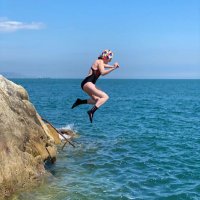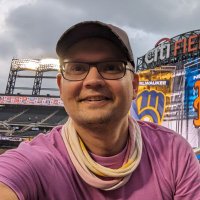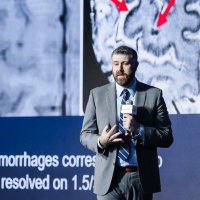
Jason Chan
@jlchan
Movement disorders neurologist @Fraserhealth. Fellowship @UFMDC. Residency @DCNSNeuro. MD/PhD @SchulichMedDent. Cognitive and systems neuroscience.
ID: 153291950
08-06-2010 04:50:56
504 Tweet
405 Followers
531 Following



Featured at MDS Aspen - Moving Beyond Movement: Diagnosing Functional Movement Disorder by Gabriela Gilmour Sarah Lidstone, MD PhD thieme-connect.com/products/ejour… "The clinical assessment acts as the first opportunity to allow patients to understand FMD as the cause for their symptoms."

Poll: Do you think gluten ataxia exists? 🥖🥨🍞🚶♂️ Antigliadine antibodies have been found in cerebellar ataxias as well as in a variety of neurological disorders. Mark Hallett presents the evidence and invites us to choose a side. What is yours?

Whirlwind tour of gait disorders at Aspen with Michael Okun. Nonnekes et al. identified 59 compensation strategies for gait impairment in Parkinson's disease and classified the strategies based on potential mechanisms: jamanetwork.com/journals/jaman…

🖥️⚡️Simon Little did an overview of data-driven adaptative DBS. To continue the discussion, read that great article in MDS that highlights advances and challenges as aDBS moves from experimental to clinical practice. Julian Neumann DBS Think Tank doi.org/10.1002/mds.29…


Device-aided therapies, including DBS, increasingly needed as # of Parkinson's patients increases. However, not all "are approved nor realistically available worldwide, due to financial limitations, resource capacity and local expertise." DBS Think Tank link.springer.com/article/10.100…

The reality is pwp worldwide don’t have access to the main treatment of Levodopa let alone access to DBS Tania Park PD Avengers Soania Mathur, MD Parkinson’s Africa care for PwP is globally inequitable




We are so proud and excited our own @ShuklaWagle from UF MovementDisorders is part of the expert panel of Video Challenge #MDSCongress! Amazing🤩


Noninvasive bilateral striatal theta-burst transcranial electrical temporal interference stimulation (tTIS) in humans increases striatal and motor network BOLD activity and facilitates motor learning Hummel Lab: nature.com/articles/s4159… DBS Think Tank


I have to say that Mark Churchland took it to another level here. I feel this is required watching for anyone in systems neuroscience. Pretty stoked to have had the chance to introduce him and this talk.

Check out this new review of neuromodulation for mood disorders led by awesome UF MovementDisorders fellows Jason Chan & Ariane V. Carpentier! Joshua Wong Michael Okun Erik Middlebrooks, MD #DBS #depression #ConnectomeSurgery tandfonline.com/doi/full/10.10…

How small are the targets we aim at for deep brain stimulation and lesion therapy for #Parkinsons, movement and neuropsychiatric disorders? I describe them to students as 'miniscule.' Great new paper by Jason Chan and Joshua Wong Norman Fixel Institute for Neurological Diseases which shows the comparison of the


Excited about this ‘review of all reviews’ about thalamic DBS for tremor by Clemens Neudorfer. In a new tour de force article, Clemens covers … 🧵1/N sciencedirect.com/science/articl…




